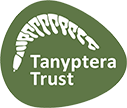Abstract (AI generated)
This report reviews the conservation importance of invertebrates in North-West England, drawing on data from the Nature Conservancy Council’s Invertebrate Site Register (1980s–1990s). It identifies the key habitats, sites and species of interest across the region, focusing on coastlands, woodlands, lowland heaths and grasslands, wetlands, and peatlands. The North-West is nationally significant for its extensive estuaries, sand dunes, and saltmarshes, which support diverse insect assemblages including rare bees, beetles, moths, and flies. Ancient woodlands, especially those with over-mature trees and long management continuity, are highlighted for their saproxylic beetle and deadwood faunas, while limestone woods sustain notable butterflies and moths. Lowland heaths and grasslands, much reduced in extent, still harbour scarce invertebrates on sites such as Thurstaston Common and the Magnesian Limestone grasslands of Yorkshire. Wetlands and peatlands, though heavily damaged, retain important specialist faunas, particularly in Cumbrian mosses and reedbeds. The report stresses the need for sustained habitat management, protection of remaining high-quality sites, and further survey work to address significant knowledge gaps.
Published 1991
Download Now







